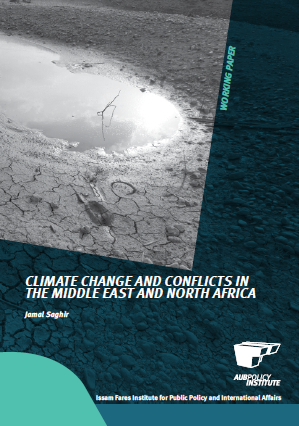Climate Change and Conflicts in the Middle East and North Africa
 |
outil d'aide à la décision Jul 2019
Aut.
Ed. AUB - Beirut
Téléchargeable sous format: PdF
Abstract:
By adding pressure on already scarce resources and
compounding preexisting threats such as political
and economic deterioration, climate change’s likely
contribution to exacerbating conflicts and violence in
the MENA region should not be dismissed.
However, the literature is broadly inconclusive about
establishing a linear link between the effects of climate
change and conflicts in MENA. Additional research
and data collection are required to comprehensively
examine the accuracy and magnitude of such links,
depending on the many contexts they may fall under.
Considering that a number of countries are experiencing
the repercussions of climate change without induced
insecurity or conflict, well established and effective
institutions are crucial for having higher levels of
resilience, and adaptation in the face of climate-related
shocks.
Climate induced migration should be addressed not
only within the framework of climate change, but also
by means of political economies that address other
economic, technological, or political conditions that
might foster or limit migration.
Conflict-sensitive adaptation measures can help avoid
situations in which climate change heightens existing
risks of destabilization or violent conflict. If designed
and implemented properly, adaptation measures
could help reduce tensions and catalyze processes
that promote stability. The ways in which adaptation
measures are designed and implemented can be a key
determinant of climate change resilience.
Mots clefs: |
Pays concerné: |
Editeur/Diffuseur: |
|
AUB
-
Université Américaine de Beyrouth - Beirut - Liban |
En cas de lien brisé, nous le mentionner à communication@pseau.org